- Guizhou -
Landlocked in the heart region of southwest China, Guizhou, or Precious Earth, has blown away visitors. The region, with an altitude of just over 1,000 meters, has no flat landscape. This is probably why ethnic minorities choose here as their home, thus, all traditions and customs are preserved, as the door of Guizhou development is closed.
With little fertile land, Guizhou is unfortunately among the poorest provinces in China. In fact, the per capita GNP is one-tenth of that of Shanghai; it is said more than 15% of the population of Guizhou live below the poverty line.
Yet when traveling in small villages in Guizhou, there are smiling faces greeting you throughout your time. The people enjoy meeting people from different cultures, some of the 18 minorities in the province sometimes take out their ceremonial costumes for the occasion. Accounting for about 3% of the population of Guizhou, these ethnic groups live hard on products provided by the surrounding land. The minorities of Miao, Dong, Bouyi, Yi, Shui, Hui, Zhuang, Gejia and many others offer an overview of their characteristics: architecture, language, customs, clothing, food and festivities are especially authentic.
Guizhou is also known for the various festivals organized by ethnic groups throughout the year. When you visit Guizhou, you would experience the local festivals more often than not.
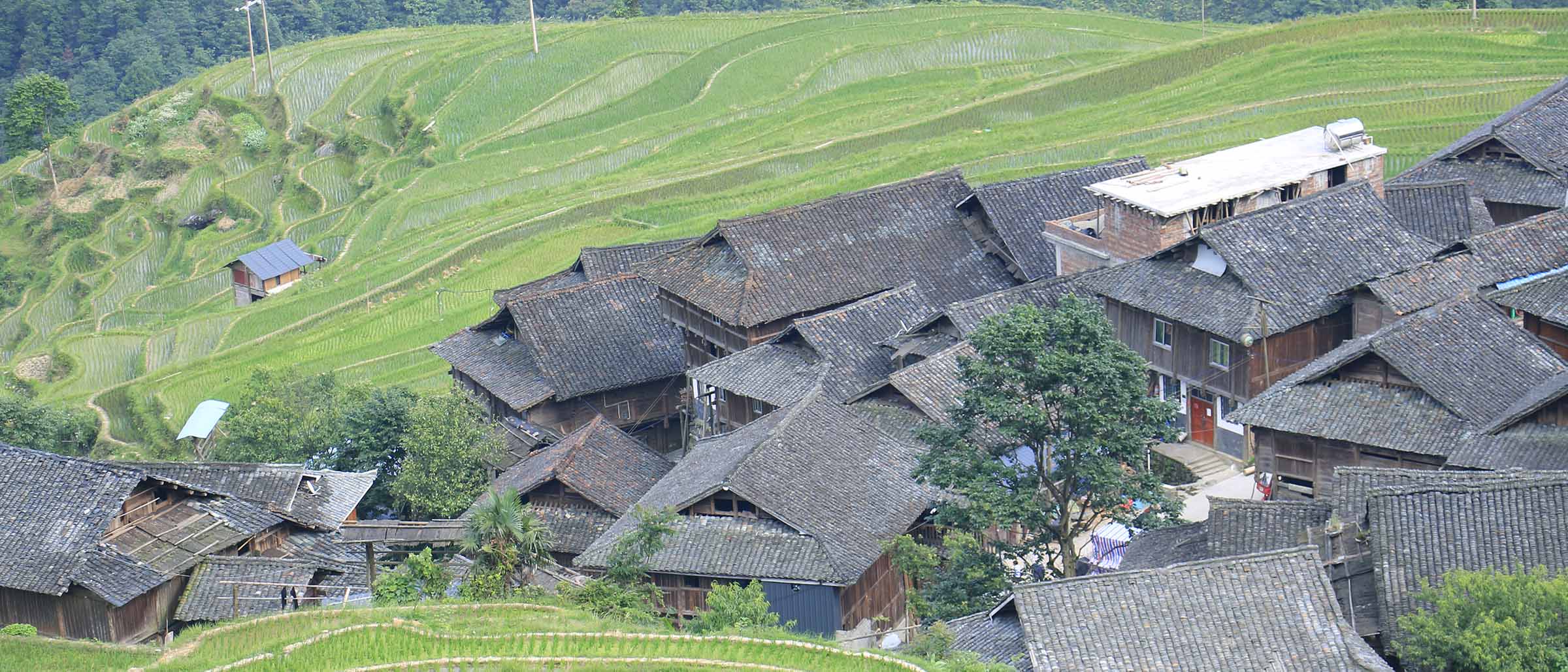
Basic Information
Chinese Name: 贵州(Gui Zhou)
Provicial Capital: Guiyang
Location: Guizhou borders the autonomous region of Guangxi to the south, Yunnan to the west, Sichuan to the northwest, the municipality of Chongqing to the north, and Hunan to the east.
Climate: subtropical humid monsoon climate
Area: 176,167km²
Population: 358,000,00(2018)
Major Ethnic Groups: Miao, Dong, Yi, Tujia, Buyi
Famous city: Guiyang, Chishui, Zunyi, Anshun, Kaili
Guizhou Geography
Guizhou is situated in the eastern part of the Yunnan-Guizhou Plateau in southwest China. In this land of towering mountains and deep valleys, there are over 300 basins which are wide in the middle and narrow at both ends. The average annual temperature is between 14°C and 16°C Eighty percent of Guizhou is mountainous. The plateau is intersected with mountains, hills, basins and valleys, giving it a very rugged, erosion formed topography. In many areas underground streams have carved the limestone into fantastic caverns.
The area north of the Miaoling mountain range is drained by the Yangtze River, whose larger tributaries are the Wujiang, Chishui and Qingshui rivers. South of the range is the Zhujiang valley, where there are Huangguoshu Waterfall – Guizhou Travel Guidethe Nanpan and Beipan rivers, both headstreams of the Xijiang River. The spectacular Huangguoshu Waterfall at the head waters of the Dabang River is Asia’s highest waterfall. The largest lake in Guizhou is Caohai.
Guizhou Cuisine
The climate in Guizhou is subtropical and humid, meaning it benefits from mild winters and comfortable summers, although the province is frequently plagued by heavy monsoons. The average temperature is roughly 10 to 20 °C, with lows of around 1 °C in January and highs of is around 28 °C in July. There is about 406 mm of rain in a year. It is dry for 218 days a year with an average humidity of 69% and an UV-index of 5.
Its seasons tend to merge with neither severe winter nor hot summer. This moderate climate is due to the high mountains and lush vegetation in the area, which wards off the intense summer heat and severe winter cold. The agreeable weather makes it suitable for travelers to visit Guizhou all year round. However, Guizhou has more overcast days and rainfall than any other part of the country. Influenced by this regions' diverse topography, the climate can be very diverse, which is well described by two local sayings: "Different weather five kilometers apart." and "Four seasons in one day".
Guizhou Climate
The cuisine of Guizhou, known as Qian cuisine is one of China's eight famous cuisines. It is called Qian cuisine because Qian is the Chinese short name for Guizhou Province. Guizhou cuisine is spicy like Sichuan Cuisine, but that is where the similarities end. The cuisine in Guizhou is sour and spicy, making it unique amongst China's cuisine styles. The locals love their Guizhou cuisine and cannot bear to go even a day without eating it. There is an ancient local saying which states "Without eating a sour dish for three days, people will stagger with weak legs". This gives a fairly good idea of their love for their local cuisine. For visitors to Guizhou, great places to pick up local snacks and food are the Hequen Road near River Park and the Shaanxi Road near the spray pond.
Guizhou Flora and Fauna
Guizhou Province boasts a plethora of flora and fauna. There are more than 3800 varieties of wild plants in the province, of which the thorny pear and the Chinese gooseberry are high in vitamin C, the agarics and other comestible mushrooms are high in protein, and the Chinese sumac is host to numerous plant galls that are rich in resins and tannic acid, which are used in the manufacture of ink, dyes, and ointments, much of which is exported. More galls are found on the plants of Guizhou Province, per square meter of area, than in any other province in China.
Medicinal plants in Guizhou Province total some 3700 varieties, accounting for 80% of the nation's total. The most famous such plants are duzhong , tianma , zhuyu, shihu, and huanglian. There are 70 varieties of rare and precious plants in Guizhou Province, of which the silver China fir, the dove tree, the bare China fir and the spindle tree fir all are under the strictest of state protection.
In addition, there are over 1000 different species of wild animals roaming freely in Guizhou Province, 83 of which belong to an endangered-species class that enjoys state protection, including the golden monkey, the black-leaf monkey, the south-China tiger and the black-neck crane.
Guizhou Tourism
Guizhou tourism resource is made up of natural landscapes, climate species, lakes, mountains and rivers, ethnic customs, sacred sites and social development.Here, mountains, water, caves, forests and stones, all blend into one harmonious whole. World-renowned Huangguoshu Waterfall, Dragon Palace Cave Scenic Area, Chishui Danxia Landform, Zhijin Cave, Qianling Park, Qingyan Ancient Town and other scenic spots are like a string of colorful gems, making tourists unforgettable.
Guizhou is charming "natural park". Its domestic natural scenery is beautiful and magic; its scenery appearance is in thousands of postures; its karst cave landscape is colorful; its wild animals is wonderful infinitely.
Here, mountains, water, holes, forests, stones enhance each other's beauty, one integrated mass. The world famous Huangguoshu Waterfall, Dragon Palace, Chishui, Zhijin Cave, Qianling Park, etc. scenic areas are like a string of bright and colorful precious stones, making tourists too many things to see and reluctant to leave.
Its multiple national long and splendid history and culture, rich and mysterious national amorous feelings, and pleasant climate, making Guizhou become an ideal tourist sightseeing and summer resort.The southeastern corner of the province is known for its unique Dong minority culture. Towns such as Rongjiang, Liping, Diping and Zhaoxing are scattered amongst the hills along the border with Guangxi. It is rich in various minority villages, such as the Zhaoxing Dong Village and Basha Miao Village.It has many covered bridges, called Wind and Rain Bridges. These were built by the Dong minority people.
The rich population of minorities in Guizhou allow for a great many ethnic festivals throughout the lunar calendar. During the first lunar month (usually February), the early festival in Kaili (east of Guiyang) celebrates local culture with acts of bullfighting, horse racing, pipe playing, and comedy works.
Folk Festivals
Guizhou plays host to hundreds of festivals every year. Guizhou people live a simple life, but they, in particular the Miao and Dong, always seem to have something to celebrate. Thus if you plan to visit Guizhou, you should make sure to hit at least one of the traditional festivals. A good starting place for festival glance is Kaili, a profusion of festivals is held in nearby villages. Some of the larger and more popular annual festivals include the Lusheng Festival, Dragon Boat Festival and Sister's Meal Festival. And these festivals are held on auspicious lunar dates and therefore vary from year to year in Roman calendar.
Bullfight Festival
The Miao and Dong people in Southeast Guizhou like to hold the "Bullfight" competitions in spring and autumn. Bulls used for fighting are specially raised and are entitled "king bulls" or "holy bulls".
During the festival, families and villages around the bullfight ground prepare feasts to entertain the coming guests and welcome the "holy bulls" from different places. Some bulls for fight are decorated with iron horns, covered with red satin,with pheasant tail on the back and bronze bells on the neck. Some bulls are decorated with big silk balls, colorful ribbons and bronze bells on the waist, and with a tiger tail. They look like generals ready to go out to battle. The entrance ceremony of the bullfight is called "stepping ground".
In recent years, during Kaili international Lusheng Festival, over on hundred buffaloes participate in the competition, with huge crowds of people watching by. The grand spectacle is bustling with noise and excitement and with a deafening sound of gongs and drums.
Sisters Meals Festival
The Sisters’ Meal Festival or the Sisters’ Rice Festival, originated from the Miao minority group.During the Sisters’ Meal Festival in the third lunar month in Shidong, Taijiang County in Southeast Guizhou Province, girls rush to the mountains to collect wild flowers and berries to dye glutinous rice known as Sister’s Rice. Everyone then starts cooking their respective special meals that are composed of glutinous rice dyed in several colors to form rice balls. Each girl prepares her rice with a symbol and then wraps it in a handkerchief or put it inside small baskets.
On that day, Miao girls give four-color rice to the man they love as a present. It is considered the oldest "Valentine's Day" of China.
Lusheng festival
Lusheng Festival is the grandest festival in the Miao and Dong ethnic areas of Guizhou province. It is held once a year from the 27th day to the 29th day of the 9th Chinese month. People from the cities and villages nearby get together to celebrate the good harvest and to greet the New Year. Lusheng is a reed-pipe wind instrument that is popular in the Miao, Yao and Dong ethnic minorities of Southwest China.
Miao's New year
The Miao's New year is a tranditional festival to offer sacrifices to the Miao's ancestors and to celebrate a bumper harvest in October in Qiandongnan Miao areas. It is usually celebrated three times -- the "Big year", the "Small Year" and the "Tail year", of which the Big Year is the most popular one, in which gatherings are held, lasting three to five days, or more than 10 days in some other areas.
The marriage celebration and house-building of the Miao people are often carried out inOctober when autumn harvest is finished and farmers are free, this adding the joyful atmosphere to the Miao's New year. In recent years many sports such as bullfight, horse race, basketball match, chess-playing contest are held during the festival, making the old festival take on a new look.
Zhenyuan Ancient Town
Chinese name: 镇远古镇(Zhen Yuan Gu Zhen)
Location: Wuyang Town, Zhenyuan County, Qiandongnan Miao Prefecture, Guizhou Province.
Ticket: Entrance ticket Free, Wuyang River Cruise CNY120.00, Black Dragon Cave CNY50.00
Estimated tour time: half day to one day
Recommended time to visit: Apr to Oct
Nearby attractions: Fanjing Mountain, Xijiang Qianhu Miao Village.

Dubbed the "Venice of the orient", Zhenyuan Ancient Town is located in Yuan County, southeast of Zhendong on the bank of Wuyang River. The river winds through the city, forming a pattern similar to the famous yin-yang symbol, so the town is sometimes called Bagua Ancient Town. Zhenyuan is a surprisingly unspoiled ancient water town, surrounded by gorgeous mountains and rivers, the town is best-known for its picturesque landscape, historic sites and mysterious ethnic cultures. The ribbon-like Wuyang River, which runs about 94 kilometers from west to the east across Zhenyuan, cuts the town into the northern "Old Fu (Government) Town" and the southern "Old Wei (Fortification) Town".The South bank contains the old acropolis, while the North bank holds the ancient city that was built during the Ming Dynasty. The city contains ancient walls and gates, and a number of ancient buildings sitting atop the hills.
With a history of nearly 2,300 years, Zhenyuan has been a hub of land and water transportation; a center of politics, trade and culture; as well as a strategically important spot in eastern Guizhou. The area's local cultures blend together with Western elements, making it a place of unique glamour.

A stroll along the narrow lanes leads one to the still non-commercialized beauty of the town, which includes well-preserved high walls, residential compounds, ancient wells and docks. Visitors can also make their way to the top of Shiping Mountain, north of the Wuyang River, to enjoy the ruins of the 3-kilometer Great Wall that was constructed during the late Southern Song Dynasty (1127-1279). The site offers a spectacular bird’s view of the tranquil town. A boat cruise along a 35-kilometer stretch of the Wuyang River provides visitors with breathtaking sights of marvelous gorges, peaks and waterfalls.
Melting the cultures of the Buddhism, Taoism and Confucianism, Zhenyuan is a famous historical and cultural city of China. The Wuyang River Scenic Spot at the state level and the group of ancient architectures of Qinglong Cave under the state protection attract numerous tourists home and abroad. There are over 200 places of historical interest and over 300 scenic spots open to tourists in the whole county. Zhenyuan is the hometown of the dragon boat. The dragon-boat race is held on the fifth day of the fifth lunar month every year on the Wuyang River. The tourist resources featuring peculiar mountains, elegant field sights, customs of the Miao and the Dong nationalities are of high value for scientific research and appreciation.
Main Attractions in Zhenyuan Ancient Town
Wuyang River
Cut through by the Wuyang River, Zhenyuan Ancient Town is divided into two parts: south city and north city, which forms a water town. Hence you will see the importance of Wuyang River for this ancient town. Flowing through the Mt. Miaoling , the charming and lively Wuyang River runs 95 kilometers from Huangping to Zhenyuan, finally into Yuanjiang River in Hunan Province. The part in Zhenyuan Ancient Town is the essence of whole part.
Taking a cruise on the Wuyang River will bring you one surprise after another. Grotesque gorges, perilous peaks and crystal-like waters present a wonderful picture before you, as if you were entering a wonderland. Secluded caves, gurgling springs, rugged rocks, dangerous passes and spectacular waterfalls interspersed on the mountains of both banks endow the Wuyang River, along with the dangers of Yangtze River and the elegance of Li River in Guilin. Each scenic spot has been given a fanciful name according to their beautiful legends.
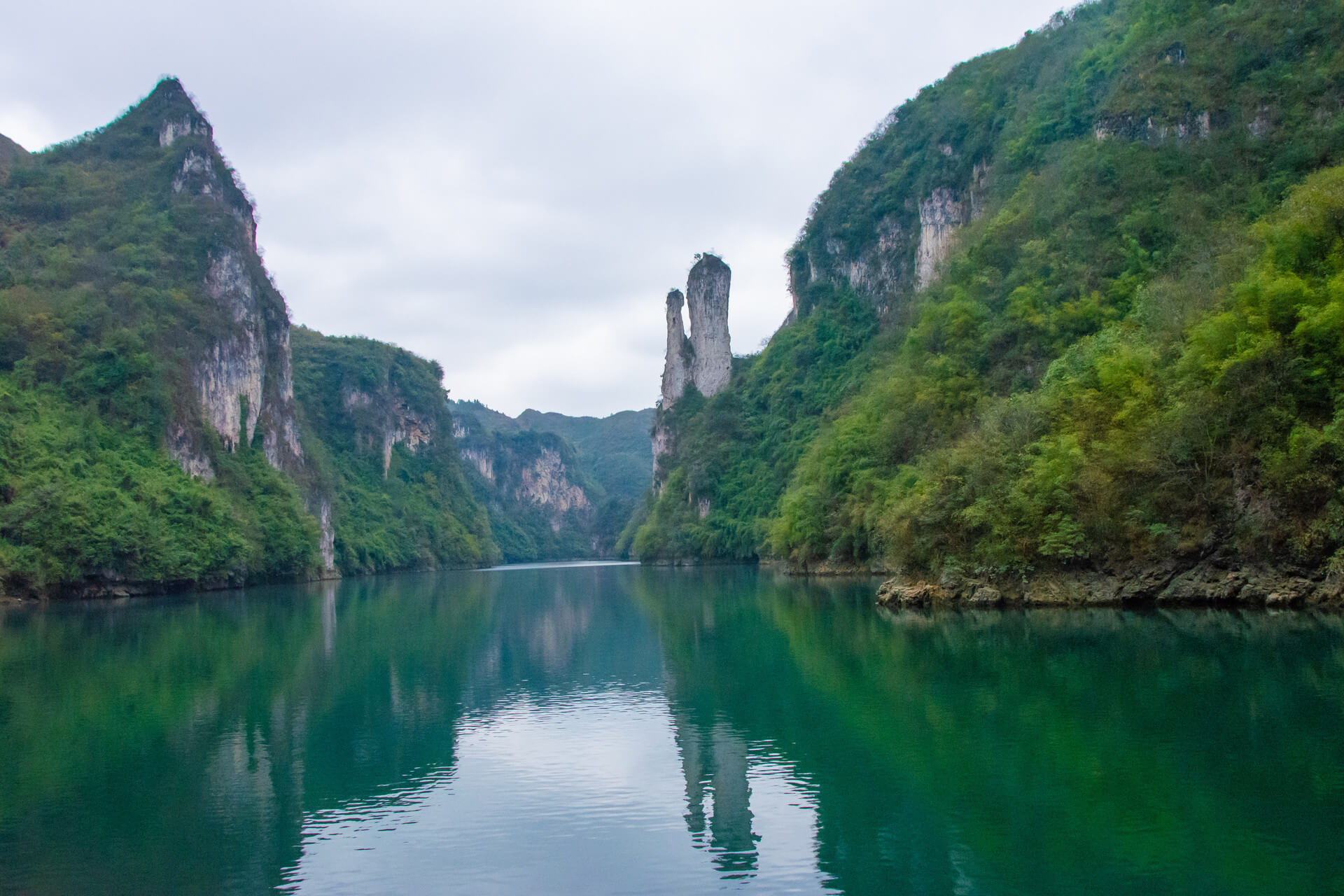
Shipin Mountain
Shiping Mountain is found on the east side of Wuyang River, Zhenyuan County. At the southern foot of Shiping Mountain, the ancient Ming and Qing Sihe Courtyard buildings are clustered with provincial key cultural relics such as Fucheng Temple, Sigong Temple, and Tianhou Palace from the top of the mountain to the foot of the mountain, the temple of fire, the Temple of Literature, and many other ancient temples can be seen. Tens of county-level cultural relic protection units, such as roadways, ancient wells, and ancestral wharfs, are located on the same site to form a huge community of ancient buildings.
The highest peak of Shipin Mountain is 204 meters above the Wuyang River’s surface. It takes about 1 hour to reach the top via the steps, where you can have a panoramic view of the ancient town.
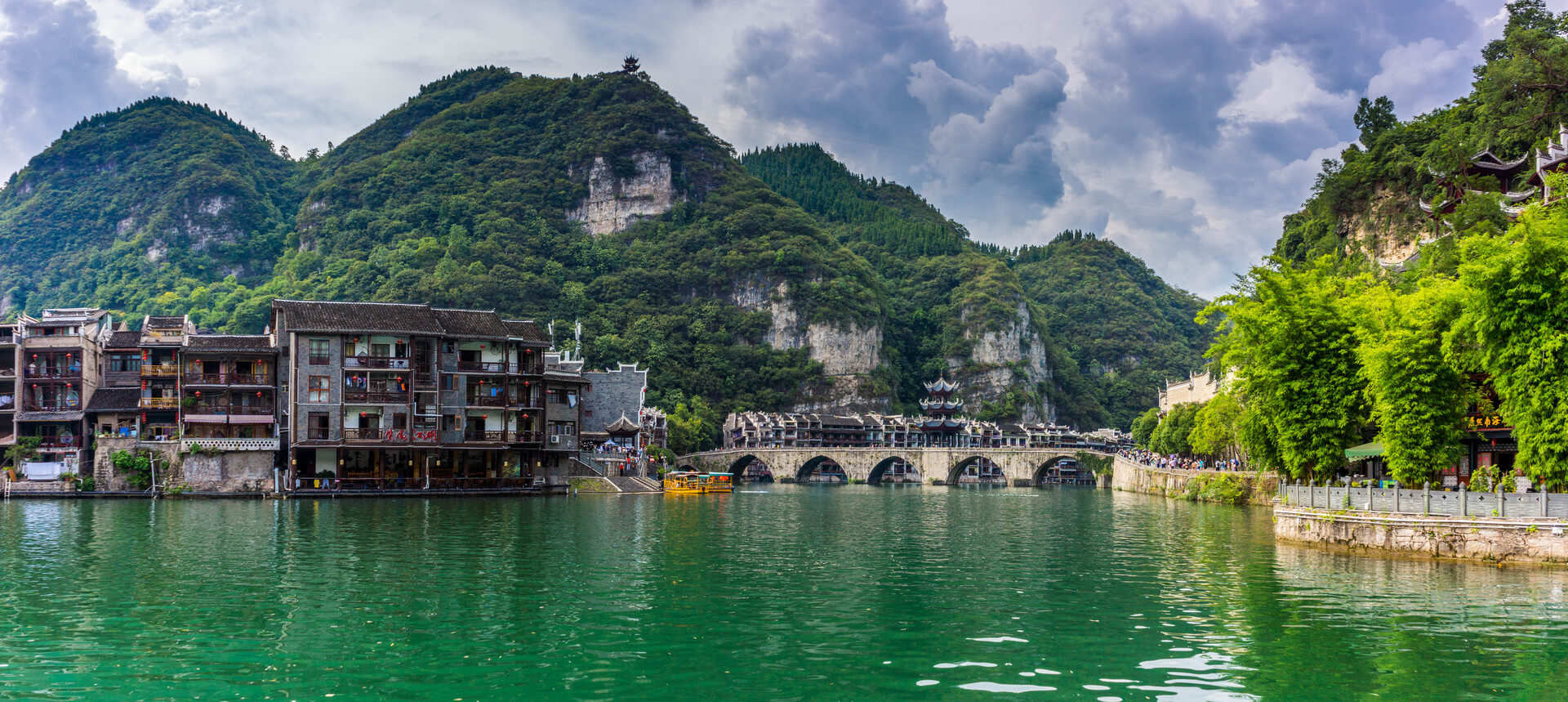
Qinglong Cave
Qinglong Cave is located at the foot of Zhonghe Mountain along the banks of Wuyang River nearby Zhenyuan. Referred to the name of the cave, one maybe image it is as a cave. But in fact, it is exactly an ancient architectural complex instead of a cave. It is a group of architecture constructed on a narrow belt of 40meters wide, 300 meters long, under cliff.
The Qinglong complex, built in 1388 (in the Ming Dynasty), consists of the Black Dragon Cave, Zhongyuan Buddhist Temples, Longevity Taoist Joss House, Ziyang Confucian College, Wish Sage Bridge, Lotus Flower Pavilion and so on. It is really a wonderful art masterpiece that skillful craftmanship make full use of the natural landform to create. Also it is a culture museum of Buddhism, Taoism and Confucianism.
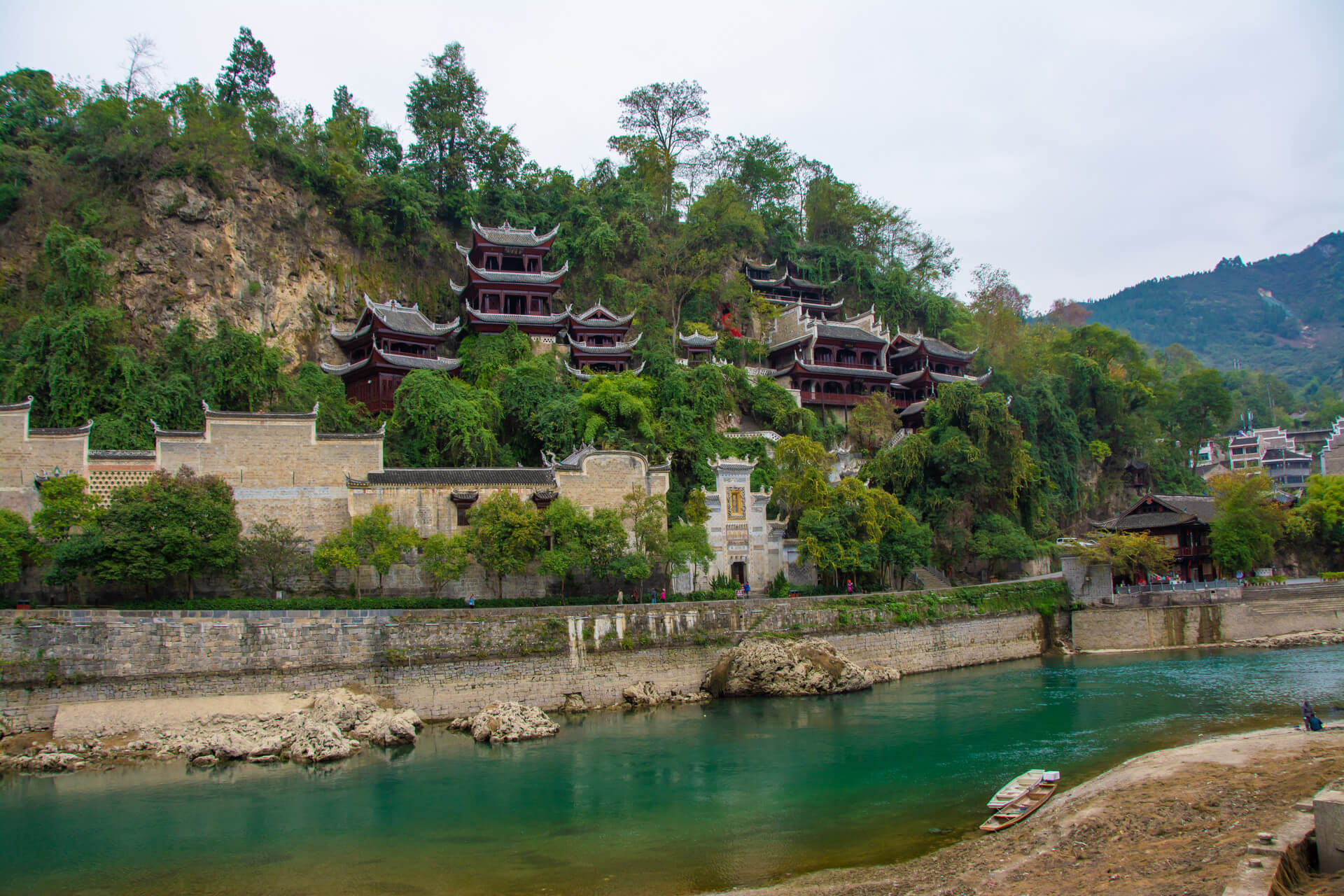

- $1138.00
- 8D7N DAYS
01. Enjoy Luoping County from its most colorful side and make beautiful pictures, the dozens of thousands of rape flower fields was awarded the title of "the world's largest natural Garden (rape plantations)" by the headquarter…
Read More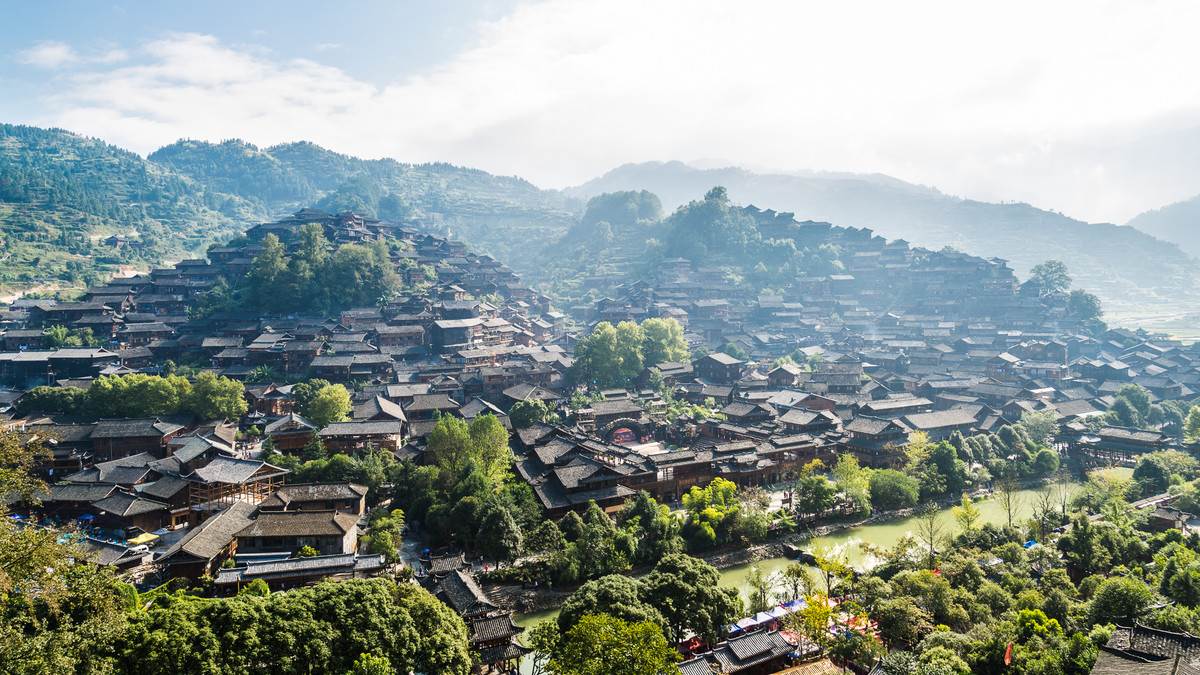
- $958.00
- 7D6N DAYS
01. Experience the original merchant lifestyle, visit master craftsmen, see superb handwork skills, and gain an in-depth understanding of the ethnic minorities’ cultures in Xijiang Miao Village.02. Appreciating different views of the waterf…
Read More